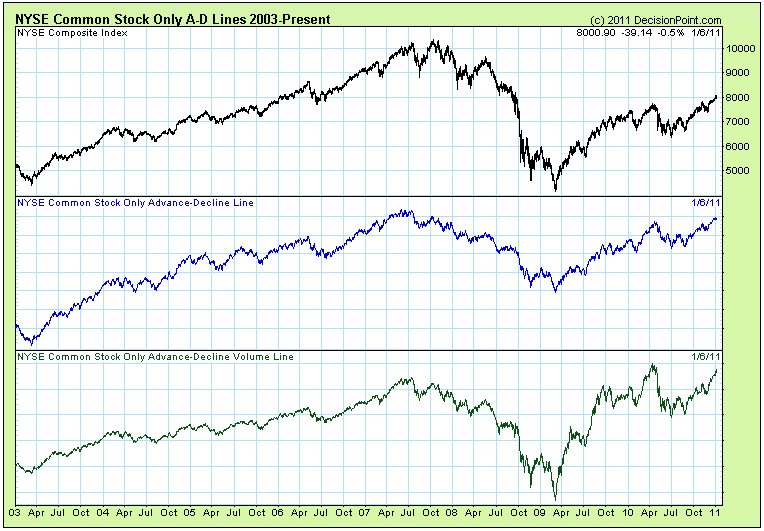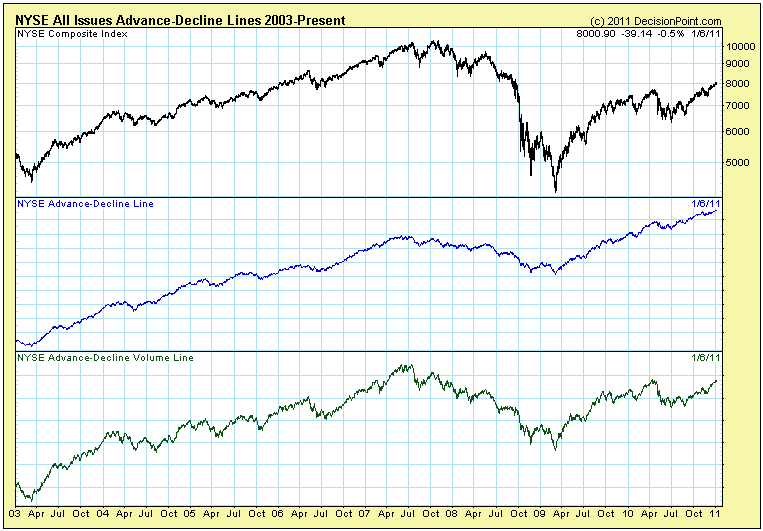QUESTION FROM READER: I've been noticing some anomalous behavior in the NYSE Advance-Decline data and other indicators based on NYSE data that does not match up with other measures of breadth. I've read comments from other authors on numerous occasions that refer to the same problem and it seems to stem from the fact that a high percentage of the issues on NYSE are fixed income and closed end funds, not real equity issues. Of late this has been, I believe, seriously skewing the data since stocks have been rising and fixed income is getting killed.
This is creating an apparent false (or at least exaggerated) divergence between price and AD line and other breadth measures as well (HL) and probably creating false Hindenburg Omens. This is, I believe, a serious problem for technical analysts who rely upon breadth data. I have pretty much decided to stop using NYSE AD and NH-NL data and will instead switch to using Nasdaq. I think you could do the entire TA world a huge service and generate a lot of interest in your service by creating an NYSE ex-closed end and fixed income fund AD line and New Highs-New Lows. It's really NEEDED!
ANSWER: We have it! Way back in 2003 the New York Stock Exchange reconstituted the NYSE Composite Index to include ONLY common stocks, weighted by market float. (To clarify, issues that are not common stocks still trade on the NYSE, but they are not included in the computation of the NYSE Composite Index.} This resulted in a much more interesting index, one that competes well with other favorites in terms of volatility and correlation to broad market movement.
Some time after this Decision Point began collecting NYSE common stock only (CSO) breadth and volume data, and we have a set of NYSE CSO indicators that are available to subscribers through our Straight Shots Menu, as well as various indicator series.
Below we have two Advance-Decline charts -- one Common Stocks Only and one with all NYSE traded issues. Currently the NYSE Composite is composed of about 1800 common stocks, whereas there are about 3500 issues of all kinds traded on the NYSE.
Obviously, the All Issues indicators have no useful relationship to the NYSE, but we still carry them for comparison.
The important thing to note is that the CSO Advance-Decline Line for breadth is confirming the price highs of the current bull market, and it is unlikely that the broad market will run into serious problems under those conditions.
Other CSO indicators available on Decision Point are the Swenlin Trading Oscillator (STO), Stocks Above Their 200-EMA, Bullish Percent Index (BPI), ITBM/ITVM, New Highs and New Lows, McClellan Oscillator, McClellan Volume Oscillator, 1% EMA of A-D, and Volume Ratios.


